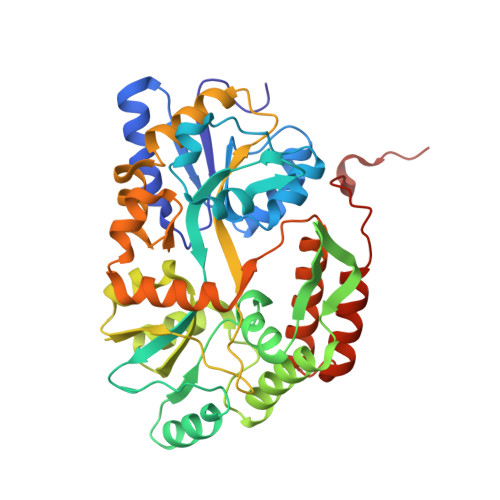Structures of segments of alpha-synuclein fused to maltose-binding protein suggest intermediate states during amyloid formation
Zhao, M., Cascio, D., Sawaya, M.R., Eisenberg, D.(2011) Protein Sci 20: 996-1004
- PubMed: 21462277
- DOI: https://doi.org/10.1002/pro.630
- Primary Citation of Related Structures:
3Q25, 3Q26, 3Q27, 3Q28, 3Q29 - PubMed Abstract:
Aggregates of the protein α-synuclein are the main component of Lewy bodies, the hallmark of Parkinson's disease. α-Synuclein aggregates are also found in many human neurodegenerative diseases known as synucleinopathies. In vivo, α-synuclein associates with membranes and adopts α-helical conformations. The details of how α-synuclein converts from the functional native state to amyloid aggregates remain unknown. In this study, we use maltose-binding protein (MBP) as a carrier to crystallize segments of α-synuclein. From crystal structures of fusions between MBP and four segments of α-synuclein, we have been able to trace a virtual model of the first 72 residues of α-synuclein. Instead of a mostly α-helical conformation observed in the lipid environment, our crystal structures show α-helices only at residues 1-13 and 20-34. The remaining segments are extended loops or coils. All of the predicted fiber-forming segments based on the 3D profile method are in extended conformations. We further show that the MBP fusion proteins with fiber-forming segments from α-synuclein can also form fiber-like nano-crystals or amyloid-like fibrils. Our structures suggest intermediate states during amyloid formation of α-synuclein.
- Department of Biological Chemistry, David Geffen School of Medicine, University of California, Los Angeles, California 90095, USA.
Organizational Affiliation:



















